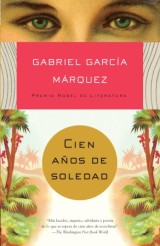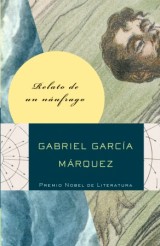“Muchos años después, frente al pelotón de fusilamiento, el Coronel Aureliano Buendía había de recordar aquella tarde remota en que su padre lo llevó a conocer el hielo”. (“Many years later, as he faced the firing squad, Colonel Aureliano Buendía was to remember that distant afternoon when his father took him to discover ice.”)
 I had almost forgotten the first time I read Cien años de soledad (One Hundred Years of Solitude). Tomé prestado (I borrowed) the book from the local biblioteca (library) and, with a sense of literary history, but not without confusion, I entered the universe of Macondo. I remember that it was hot, there was a lot of vegetation and characters mingled with one another in such a twisted way that, at one point in my reading, I had to go back to the firing squad and start drawing un árbol genealógico (a family tree) of the Buendía familly. From that moment on, the piece of paper with the family tree always accompanied my passionate recommendation.
I had almost forgotten the first time I read Cien años de soledad (One Hundred Years of Solitude). Tomé prestado (I borrowed) the book from the local biblioteca (library) and, with a sense of literary history, but not without confusion, I entered the universe of Macondo. I remember that it was hot, there was a lot of vegetation and characters mingled with one another in such a twisted way that, at one point in my reading, I had to go back to the firing squad and start drawing un árbol genealógico (a family tree) of the Buendía familly. From that moment on, the piece of paper with the family tree always accompanied my passionate recommendation. 
It would be a bold move for any Spanish learner to try to read the Spanish of García Márquez, but well worth the effort. To engage with his writing one might read him out loud and feel his words as they’re spoken, not only in literary fiction. García Márrquez was a journalist at heart and journalism was where his writing began. Relato de un náufrago (The Story of a Shipwrecked Sailor) is a non-fiction text first published as a fourteen installment newspaper article. The author tells us the true story of the surviving sailor of a shipwreck who goes from being hopeless lost at sea for ten days to become a national hero in Colombia.
 Following the worldwide success of Cien años de soledad and El amor en los tiempos del cólera (Love in the Time of Cholera), García Márquez took on the task of writing about Latin America´s bigger than life leader, Simón Bolívar. El general en su laberinto (The General in His Labyrinth) makes an intimate and controversial portrait of El Libertador (The Liberator) during the last months of his life. El general would be a great choice for those of you interested in the history of the continent. For the readers who love to learn more about the lives of great writers, Vivir para contarla (Living to Tell the Tale), García Márquez’s autobiography, would be my recommendation. In it, I found clues about the writer’s world as well as my own life. Just look at the epigraph that opens Vivir para contarla: “La vida no es la que uno vivió, sino la que uno recuerda …” (“Life is not what one lived, but what one remembers…”) Just what el Coronel Aureliano Buendía thought frente al pelotón de fusilamiento.
Following the worldwide success of Cien años de soledad and El amor en los tiempos del cólera (Love in the Time of Cholera), García Márquez took on the task of writing about Latin America´s bigger than life leader, Simón Bolívar. El general en su laberinto (The General in His Labyrinth) makes an intimate and controversial portrait of El Libertador (The Liberator) during the last months of his life. El general would be a great choice for those of you interested in the history of the continent. For the readers who love to learn more about the lives of great writers, Vivir para contarla (Living to Tell the Tale), García Márquez’s autobiography, would be my recommendation. In it, I found clues about the writer’s world as well as my own life. Just look at the epigraph that opens Vivir para contarla: “La vida no es la que uno vivió, sino la que uno recuerda …” (“Life is not what one lived, but what one remembers…”) Just what el Coronel Aureliano Buendía thought frente al pelotón de fusilamiento.